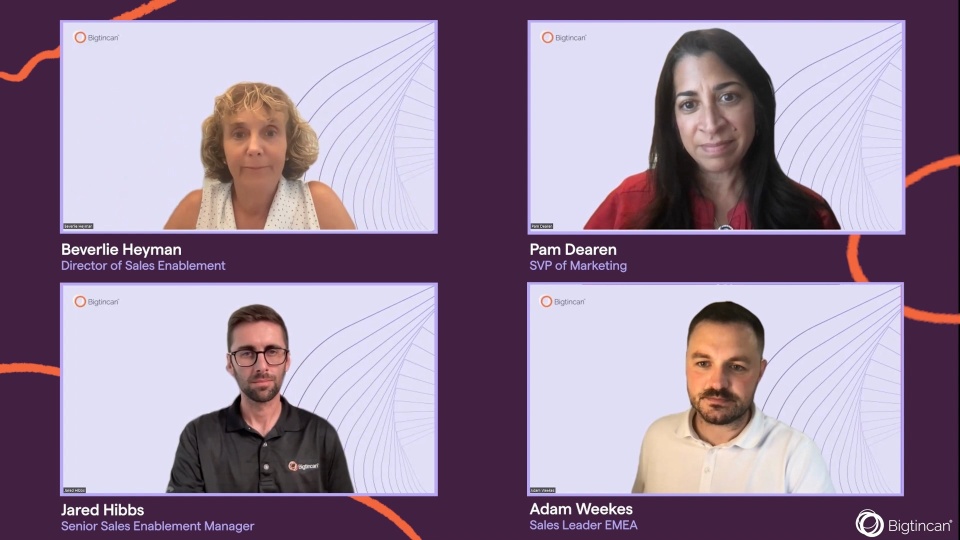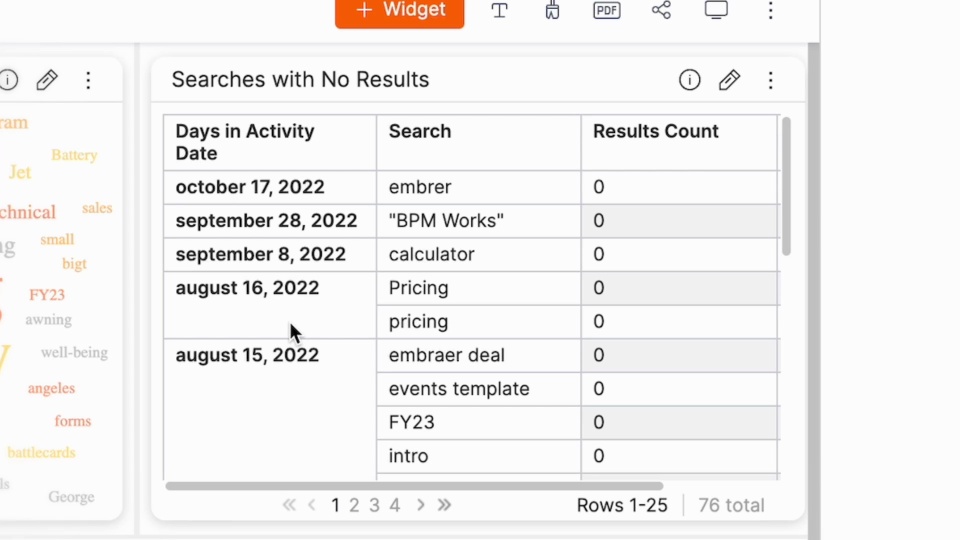Regardless of role, people generally want to know their work matters and is appreciated. That’s why not knowing if or how sellers and buyers use content tops the list of frustrations enablement practitioners face on a daily basis.
You put your blood, sweat, and tears into creating sales collateral and training courses only to see them ignored. It may be common but it still stings.
Our audience told us as much in a roundtable about content-related enablement frustrations where much of the conversation focused on engagement data and its integral role in providing concrete direction for enablement, marketing, and sales teams.
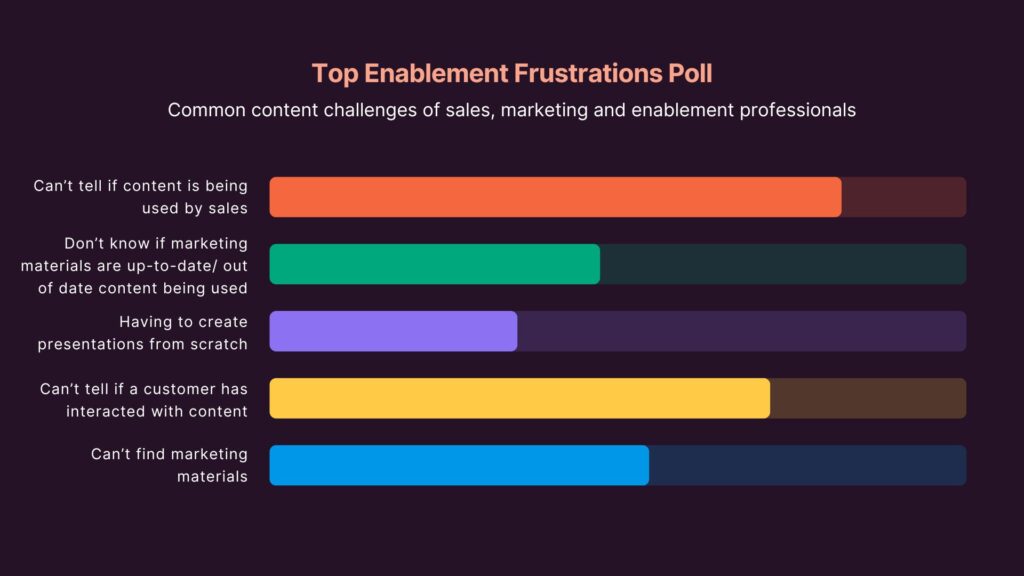 Representation of live poll from webinar
Representation of live poll from webinar
Here’s a quick preview of the conversation:
Following this discussion, I sat down with our own in-house experts to break down the process of moving from enablement insights to meaningful action when it comes to using engagement data to improve sales, training, and content adoption. Below are the metrics they highlighted, using our own solution, Bigtincan, as an example (since Bigtincan uses Bigtincan).
Take a look.
Engagement insights for enablement practitioners
Number of engaged users
So you have an enablement platform or other repository where you keep your learning and sales content. Before you dive any deeper into individual rep engagement or content analytics, you first need to know if and how many of your sellers are actually logging into it.
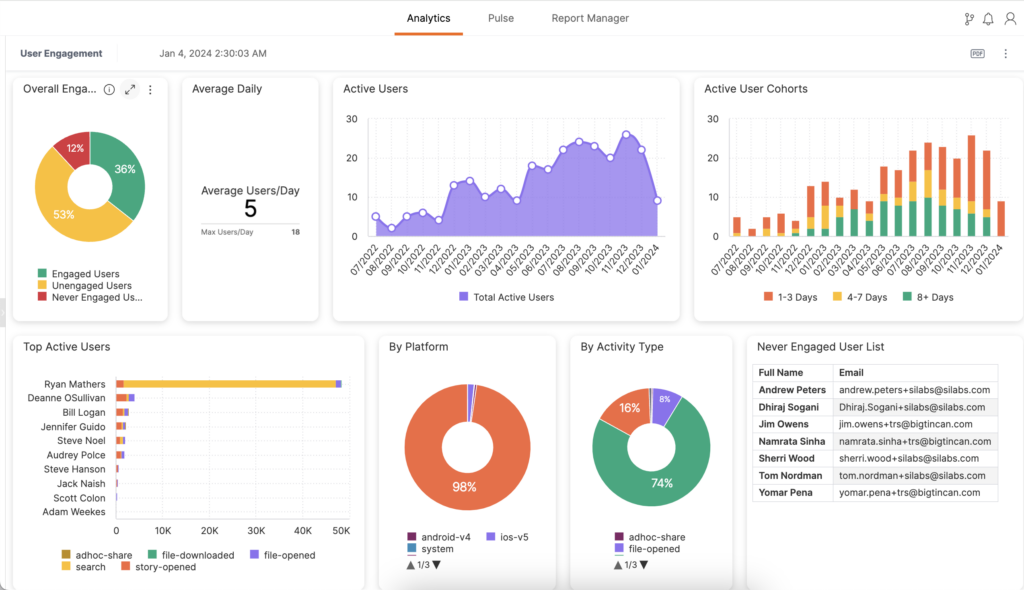
Bigtincan User Engagement Dashboard
Starting with the “number of engaged users” metric gives you insight into seller awareness and interest in the enablement platform and the content it contains.
If more than half of your sellers have never logged into the application, there are a variety of things that could be going on:
- They may have forgotten about it or may even have technical issues preventing them from logging in. Remind them directly and set them up with IT if needed. Make sure they can access the platform on whatever device they prefer to increase adoption.
- They may be using an older or different tool instead of the new and/or recommended one. Sales reps famously have an overwhelming amount of tools at their disposal and things can get lost in the shuffle.
- They logged in once or twice, didn’t find what they needed, and never checked back. Ask them why and show them what’s available now. If your platform allows, you can even look into their time spent viewing content to understand whether they thoroughly reviewed content before dismissing it.
- They’re creating their own sales collateral and/or don’t spend any time on continuous learning to stay up to date with information and materials. Take some time to get them on board with company processes and emphasize the value of approved learning and sales content.
Once you’ve checked overall engagement, you’ll want to dig into who exactly is logging in and who isn’t.
Are high performers the only people logging in? Are only the newer reps who were onboarded with a newer tool logging into it? Are only SDRs/BDRs/ADRs logging in while Account Execs ignore it or vice versa? Are reps in a certain territory not using it?
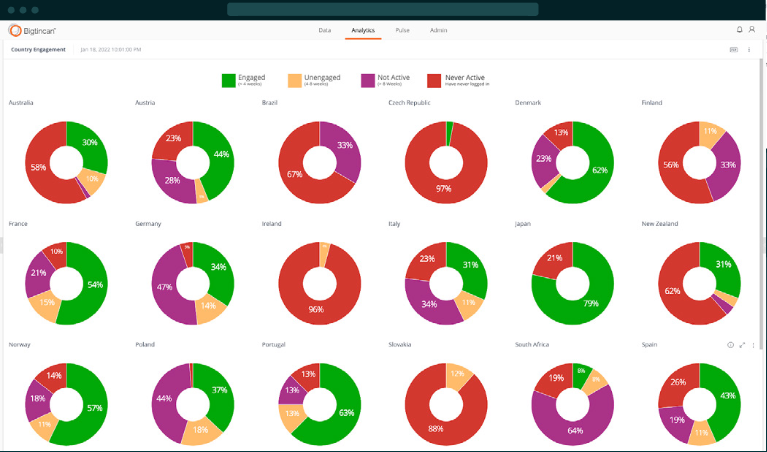
User Engagement by Territory in Bigtincan
These insights help you pinpoint issues and determine which steps you have to take to resolve them, like spreading awareness, emphasizing the value, and creating relevant content. In Bigtincan, this is all visible on an Engaged Users Dashboard (shown above).
But, “engaged users” is only one metric. And as Hibbs put it, “It's a combination of things that tell the story, right? Just one metric doesn't really mean a whole lot for us.”
Content searched for by sellers
After you find out who your engaged users are, your next step is to find out what those users want out of the platform. More specifically, what content do they expect to find?
A Content Analytics Dashboard (Bigtincan’s version shown below) will show you what your sellers are searching for, what they’re opening, and what they’re sharing.
The discrepancy between the “searched for” and “opened/shared” metrics tell the story you need to determine your course of action to increase the latter.
If sellers are searching for datasheets, for example, and then not opening or sharing the datasheets surfaced in the search results, you know you have some follow-up to do. Is the existing collateral outdated or irrelevant to those sellers? It’s clear the sellers searching that term had an interest or a need that they felt wasn’t met.
See a live dashboard and the insights it provides:
Or perhaps there are some knowledge or skill gaps that have sellers hesitating to leverage collateral in certain situations. This information will help you craft training courses around content usage, how to talk about content with prospects, when to share certain types of content, and more. Either way, you have some conversations to start to resolve the issue.
And similar to engagement, moving for surface-level insights and digging into exactly who is and who isn’t opening/sharing content is also prescriptive.
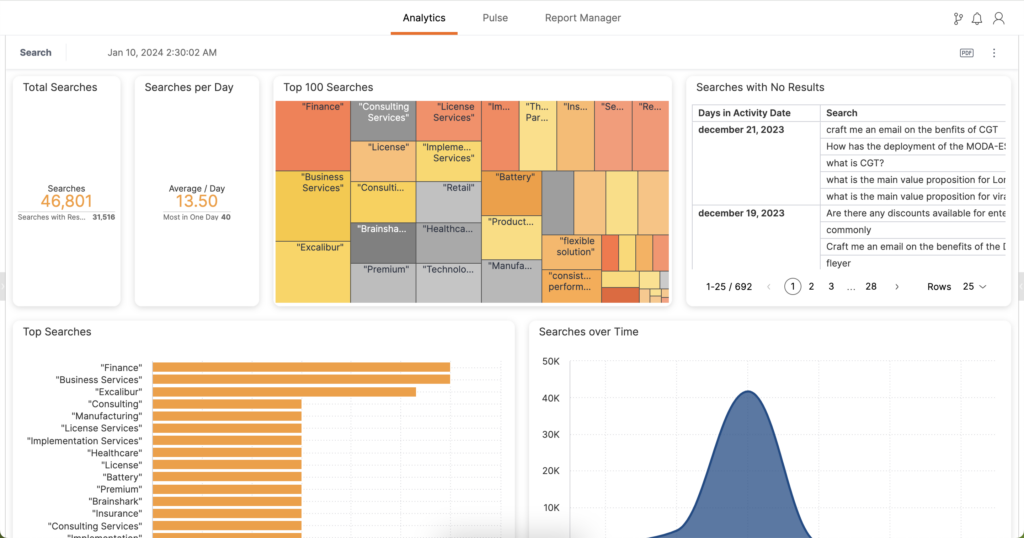
Content Search Analytics in Bigtincan
In our case, we saw one team averaging about half the amount of content being opened as the rest of the company. That’s an opportunity to use that team’s success as a teachable moment for the rest of the sellers who aren’t taking full advantage of the resources available to them to enrich their buyer interactions.
We might see, at the granular level, some people not using content that the more tenured reps are using and that gives us pause. So we will meet up with them to talk about what others might be doing that’s working. We’ll say, ‘Here's the content you should be thinking about for these deals and here's how others are positioning it and why they're sending it out.
-Beverlie Heyman, Director of Sales Enablement at Bigtincan
Actions enablement practitioners can take to increase sales KPIs
Content searches coming up empty?
Ask your reps about their content needs/expectations and sit down with your marketing team/content creators to answer those queries that came up blank.
Content not being shared?
Are sellers searching for content using certain keywords and then not opening or sharing what they find? The search results that do come up could be missing the mark.
Or maybe the content sellers asked for has been created and uploaded to the repository and they’re still not sharing or even opening it. Time to audit, update, and organize it (see our first hand experience with this in the next section) — it may just be hard to find!
Reps not signing in?
Make sure they’re aware of the tools and how other reps are using them. Sellers are famously distractible (unless it comes to their quota), so set up regular check-ins and reminders of what tools they have available to them (and how they support reaching that quota).
They may need admin/tech support in case the hold up is technical.
Real life, non-hypothetical example of engagement insights to action
Here’s the story told pretty much verbatim by our enablement team:
“Last year, we ran a project to consolidate the content available for sales users to things that have been more impactful. We use the increase of engaged users as a lagging indicator of that project's success.

As you can see over the last year, the number of engaged users is actually trending up by about 20%. And that’s a big win.
Previously, engagement was lower because there was just too much content and a lot of it was outdated.
After we audited, deleted, and organized the content that was in the system, engagement increased pretty quickly when people realized they could easily find what they were looking for.”
The takeaway from this story? Even if you have a good sales enablement platform you have to actively monitor engagement and content metrics and then take the actions they prescribe (like deleting and organizing your content) to keep them trending up.
Want more insights and guidance to improve your enablement efforts?
Follow Bigtincan on LinkedIn for updates and get a copy of this actionable guide while you’re at it:
Enablement Just Got Personal: How to resolve the personal frustrations holding your business back
